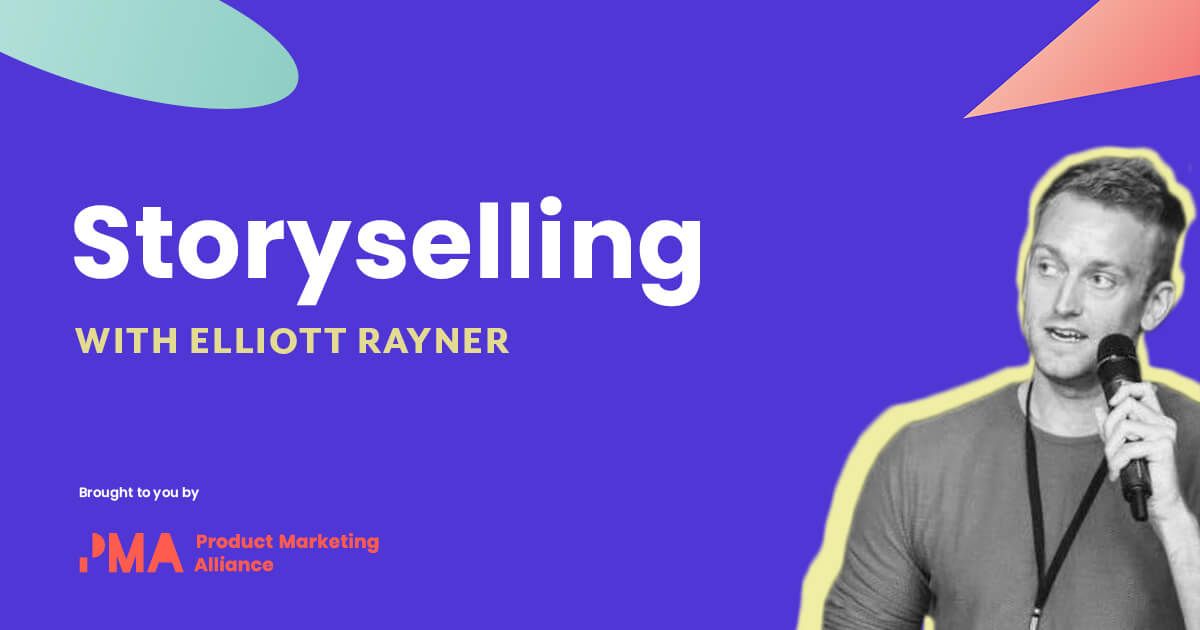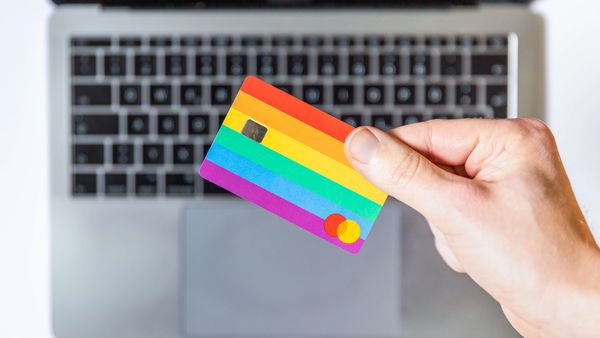This article has been adapted from Edward’s thought-provoking conversation with Mark Assini on the Product Marketing Life podcast. Listen to the episode in its full glory on Spotify or Apple Podcasts.
Hey, I’m Edward Ramsden, and I’ve been doing product marketing at fintechs for a few years now.
I recently discovered how few of my friends understood what I do for a living – not just in the way many people misunderstand the product marketer job title, but in a more fundamental sense: some thought ‘fintech’ was the name of a company. So, before we go any further, let’s make sure we’re all on the same page.
Fintech is short for financial technology. It encompasses payment services like PayPal and Square, trading platforms like Robinhood, as well as credit card processing, business financing, ‘buy now, pay later’ programs, insurance, and payroll tools. The crux of it is that fintech takes these financial tools and integrates them into a Software as a Service (SaaS) business model.
Now, let’s dive into why fintech is so crucial for the success of SaaS businesses.
How fintech helps SaaS businesses to succeed
Interestingly, a lot of the SaaS businesses you see today didn't initially include payment processing in their core workflow. However, as they evolved and needed to handle payments, it became a natural extension to either partner with an existing player like PayPal or to develop their own in-house payment platform.
Nowadays, it's pretty common for SaaS businesses to offer payments and other financial products like lending and ‘buy now, pay later’ options. Meanwhile, less mature services include things like bank accounts, credit cards, and payroll.
The driving force behind these additions, though, is always customer value. When you add core functionalities to your product that simplify payment processes for your customer, the overall value they get from your product increases.
Take a restaurant for example. Instead of managing multiple pieces of software, like their point of sale (POS) system, ordering software, and inventory software, they can streamline their operations by using a comprehensive, integrated solution. This not only reduces the time spent toggling between different software but also improves data reconciliation and overall business understanding.
Also, if you're a business that deals with customer invoicing and billing, offering online payments can help get you paid a lot more quickly. This is especially critical for small businesses, where cash flow can often be a major challenge.
When a business decides to bring payments in-house, it can significantly boost revenue. They're now able to include processing fees in their gross revenue, and as a result, the lifetime value (LTV) of the customer increases. In some cases, businesses can realize two to five times more revenue per customer. This increase has a profound impact on unit economics, allowing businesses to invest more in customer acquisition.
This increased spending capacity expands the total available market (TAM). It allows businesses to pursue customers who were previously considered too expensive to go after. It also opens doors to new marketing channels and allows for great opportunities like expansion into markets that were previously seen as too costly.
How fintech benefits small businesses
Small businesses stand to benefit immensely from embedded fintech. Just think about the everyday consumer's interaction with services like UberEats, SkipTheDishes, Amazon, Lululemon, or Peloton, where ‘buy now, pay later’ options are common. These experiences shape customer expectations.
Now, let's imagine a small business owner is able to provide a similar seamless checkout experience or ‘buy now, pay later’ service. They're suddenly able to compete at a level that was previously out of their reach, for only the cost of their SaaS subscription fee, which is typically somewhere around $100 to $150 per month.
By providing this high-quality, world-class customer experience, these small business owners are not just meeting their customers' expectations but exceeding them. This not only results in higher customer retention but also boosts average revenue per user (ARPU). In short, embedding fintech into your product or service creates a huge knock-on effect of increased value.
The challenges of driving fintech solutions as a product marketer
Driving fintech solutions as a product marketer presents some unique challenges. These can be divided into two dimensions: the customer perspective and the internal perspective. Let’s delve into the customer perspective first.
A lot of small and midsize businesses (SMBs) still rely heavily on checks. They’re convenient and they offer low processing fees, which are critical considerations for cost-sensitive businesses. Transitioning these businesses away from checks and toward digital payments can be a tough sell.
There’s an adoption curve. Many small businesses are just entering the early maturity phase; they might already be using online payments. Some might come to your SaaS business having already integrated a platform like Square into their operations. Discussing the value of embedding payments into their SaaS business can be a nuanced and challenging conversation.
Then you have a segment of your customer base that is reluctant to give up checks because they’re so fee-sensitive. What they often fail to realize is that they need to offer payment options that their customers want to use. If you’re only allowing your customers to pay with ACH (automated clearing house, also known as ‘direct payments’) or checks, are they going to do that? Probably not. They expect to be able to use their credit cards.
Getting businesses to understand their customers’ expectations and the convenience of online payments is challenging. However, the value of adopting digital payments is twofold: faster payment receipt and access to embedded fintech products like lending. Businesses can benefit from lending decisions based on cash flow rather than credit history. The lending costs might be higher than traditional banks, but there's no collateral requirement, so it’s a beneficial trade-off.
However, convincing businesses of these benefits and making them understand they can move beyond traditional banking isn't straightforward. The ultimate challenge as a product marketer is getting people to understand and appreciate the value of your product, but that’s a core reason why product marketers exist.
Another major challenge that is often overlooked is the internal one. Many SaaS businesses don't offer payment solutions when they first enter the market. As a result, the internal teams have developed a specific understanding of what the company does and how they interact with customers, which doesn't include payments.
Typically, the narrative in many SaaS companies revolves around the significant revenue that can be generated through payments. Given that processing volumes can run into the billions, the gross revenue that the SaaS business retains can be considerable. This revenue potential often becomes the key talking point, centering around discussions about share price and the path to an IPO (initial public offering).
While these conversations are important, they can be counterproductive as they can make internal stakeholders feel like used car salespeople, simply trying to push payments to boost profits. The conversation that should be front and center – the inherent value that embedded payment solutions and fintech offer to customers – often gets sidelined.

Shifting the internal narrative
One of the biggest hurdles is shifting this internal narrative to acknowledge that the core part of the SaaS business now includes a fintech element. It's about education and making sure internal teams understand the value provided by these new features.
No one in customer support, for example, should feel like they're being forced to sell payment options. Instead, the perspective should be that we're offering payments because it helps our customers get paid faster and helps their businesses succeed.
Overcoming this internal challenge is crucial. The value proposition of integrating fintech isn't solely about boosting the SaaS business's share price; it's about delivering meaningful value to the customers.
Above all, you have to be patient. Winning everyone over, whether internally or externally, won't happen overnight. It’s about building trust, constantly educating, and stacking up small wins along the way.
For many fintech solutions, it's also about finding the right time to engage your customers – maybe it's not the first time they create an invoice or bill. It's essential to maintain a continuous effort, providing educational campaigns and nurturing customers through different marketing channels.
Whether it's YouTube videos, customer support stories, or case studies, all these things can build awareness and trust in the back of the customer's mind that they should be using your product for payments, lending, ‘buy now, pay later,’ insurance, etc. It's about sustaining that pressure to build understanding and acceptance.
That also goes internally. You have to build trust with customer support teams and sales teams. To do that, you need to understand your internal stakeholders, what matters to them, and how they're measured for success. That way, you can present your payment solution as something that will get them closer to their KPIs or OKRs.
The future of fintech
In the world of fintech right now, you can see a spectrum of maturity. Payments and lending, for example, are fairly mature sectors, while ‘buy now, pay later’ services, although common in e-commerce, are less mature in the service sector. There are also less mature products like card issuing, payroll, insurance (although insurtech – insurance technology – is a hot area right now), and bank accounts.
Introducing these less mature elements like payroll, bank accounts, and insurance, will likely involve complex and possibly confusing discussions with customers. It involves shifting their expectations about what they should be getting from a SaaS platform. They might not be used to getting insurance for their small business through a SaaS provider, for instance.
What does the future look like?
It’ll be interesting to see how companies manage these conversations, setting the expectation that these services can and should be delivered online and that it's natural to get a bank account when opening a business. Even though the benefits are huge, the conversation about depositing all your funds with a SaaS company is a tricky one to navigate because people don’t necessarily trust brick-and-mortar banks, much less online ones.
As these markets mature, especially areas like payroll and benefits, the conversations will become more complex. There's massive potential value in innovative payroll products, such as being able to pay out wages daily, which could boost employee retention – a critical issue for many small businesses.
However, integrating payroll into the core workflow of a SaaS platform, while beneficial, is still a concept that's in its infancy. Explaining to customers that, yes, we're a SaaS company you use for your core workflow, but now payroll is a part of that, could be a tough conversation, but an essential one as the landscape of fintech continues to evolve.


 Follow us on LinkedIn
Follow us on LinkedIn

